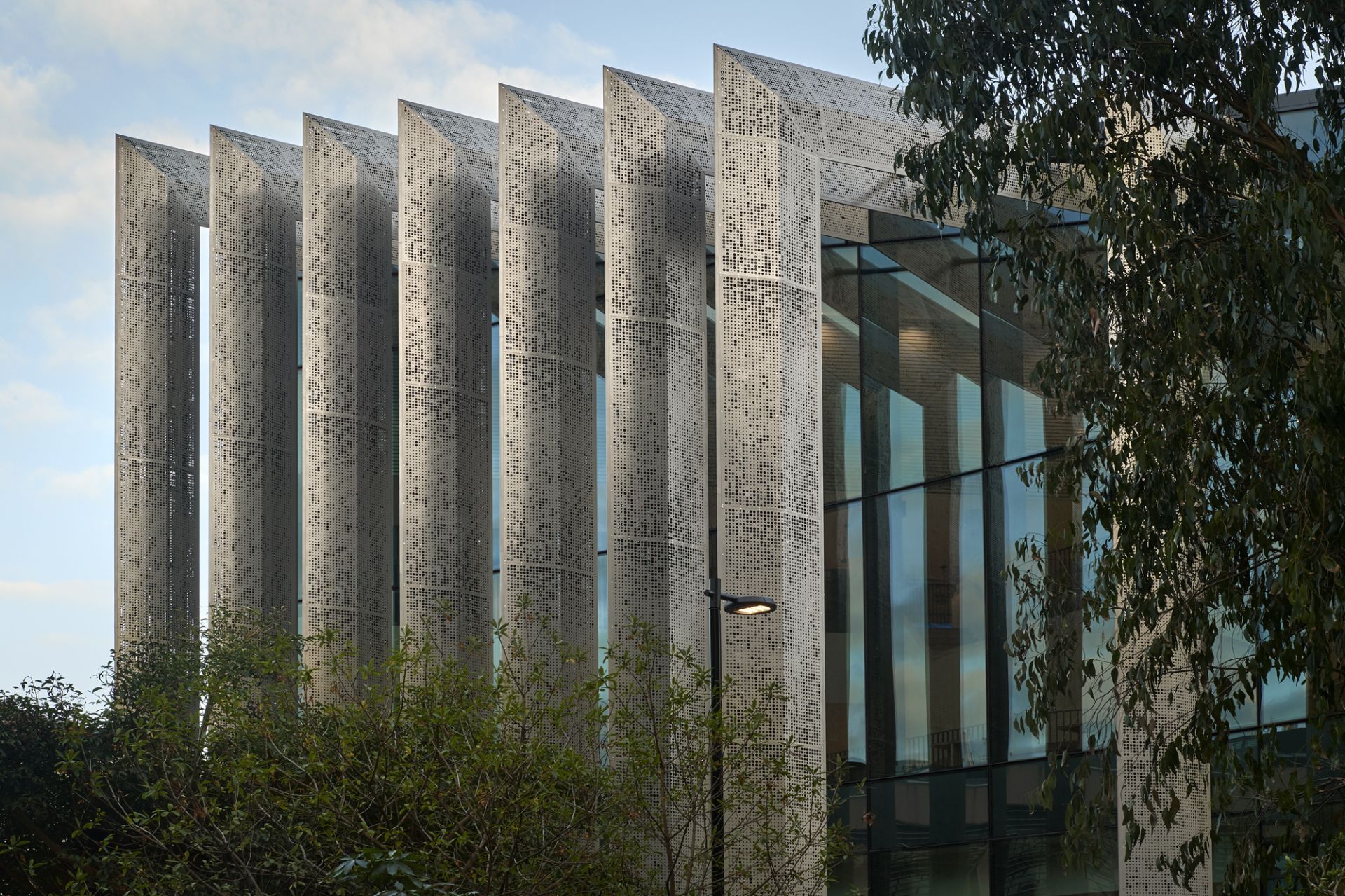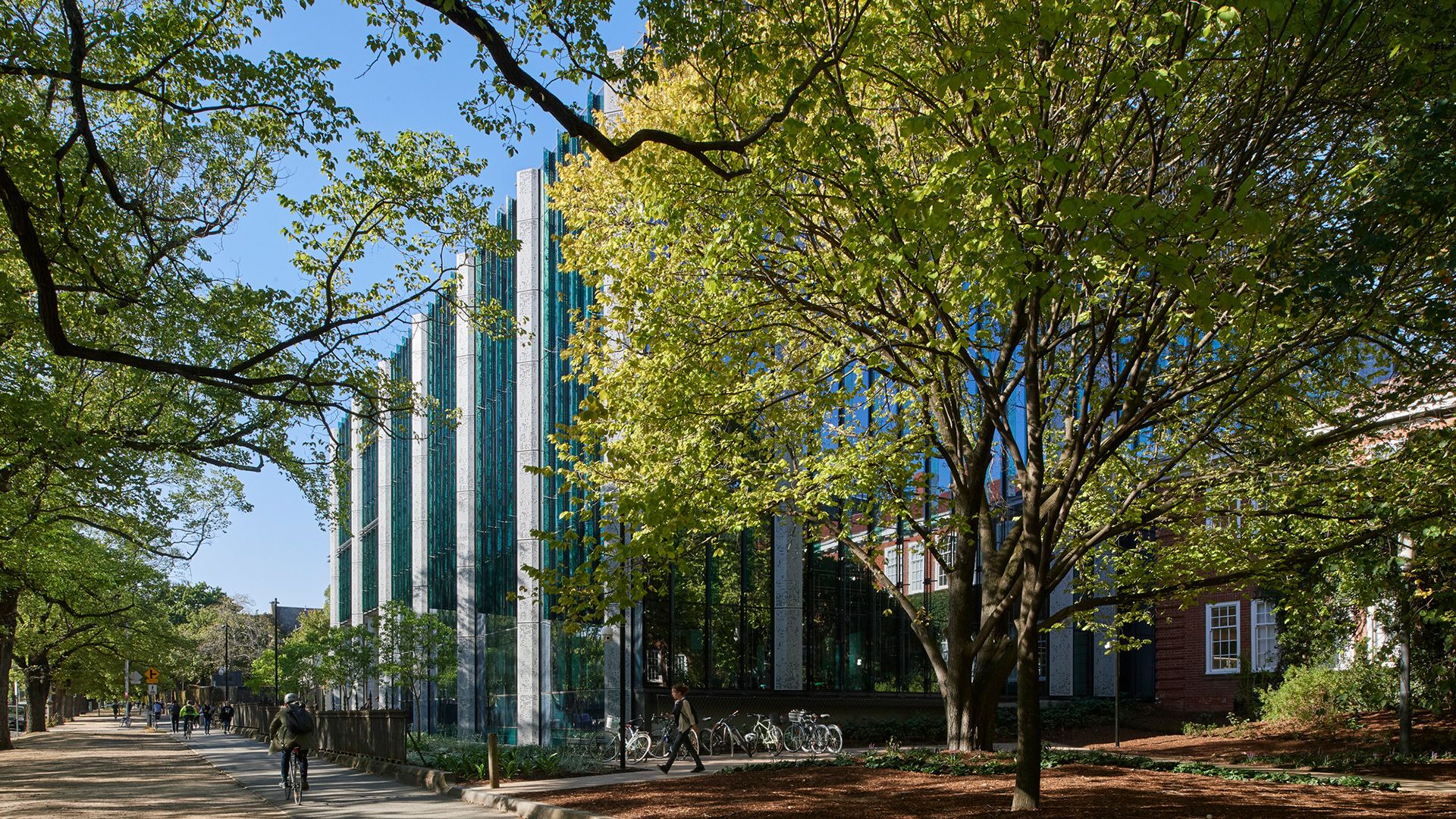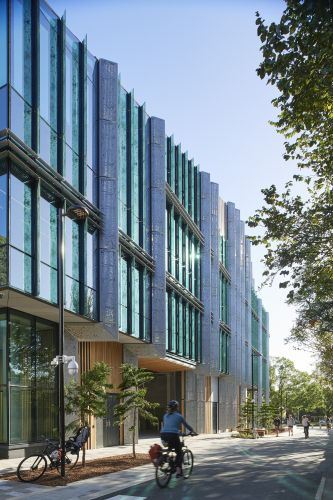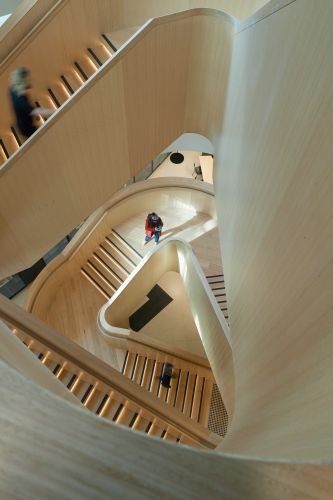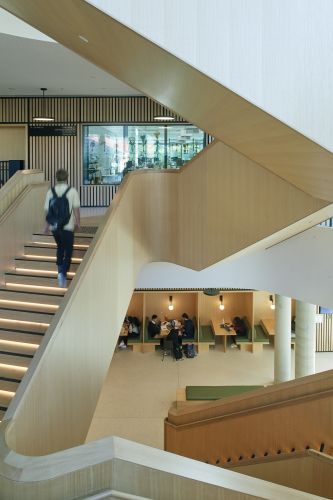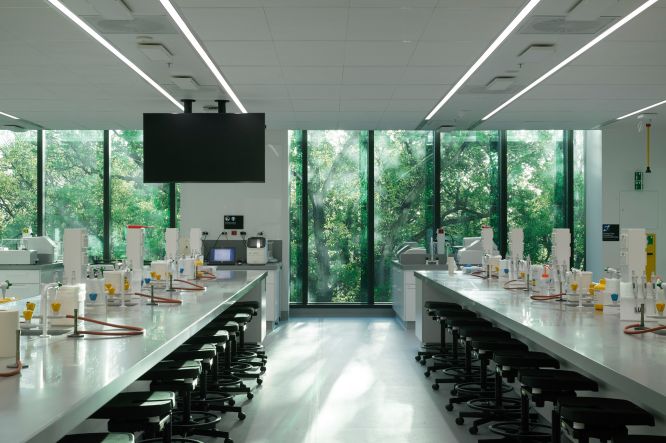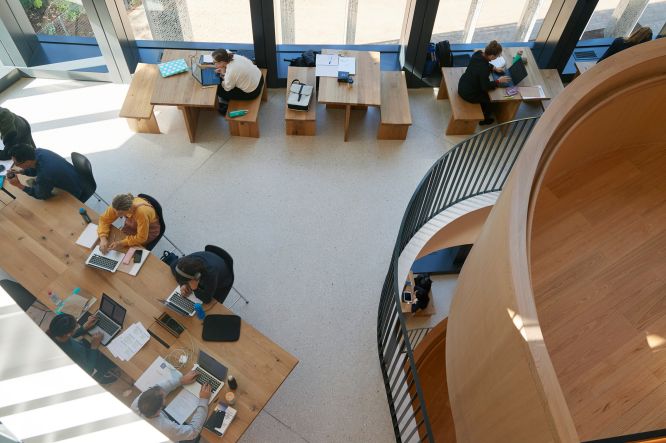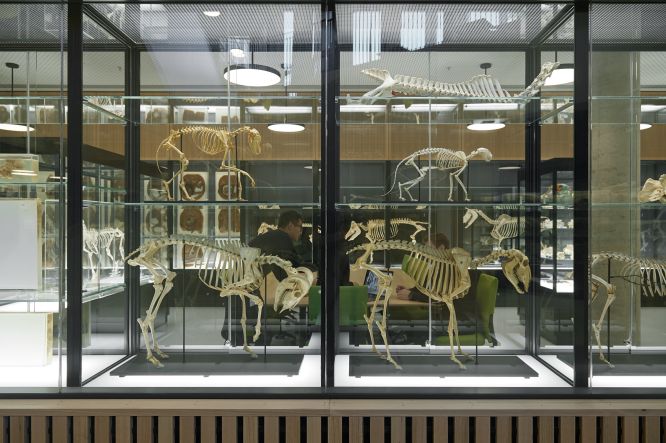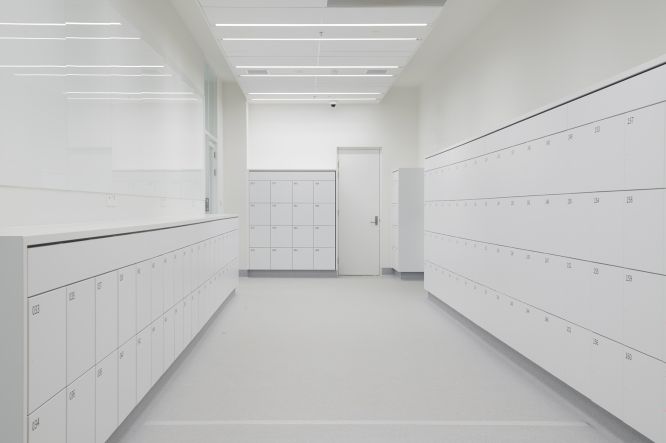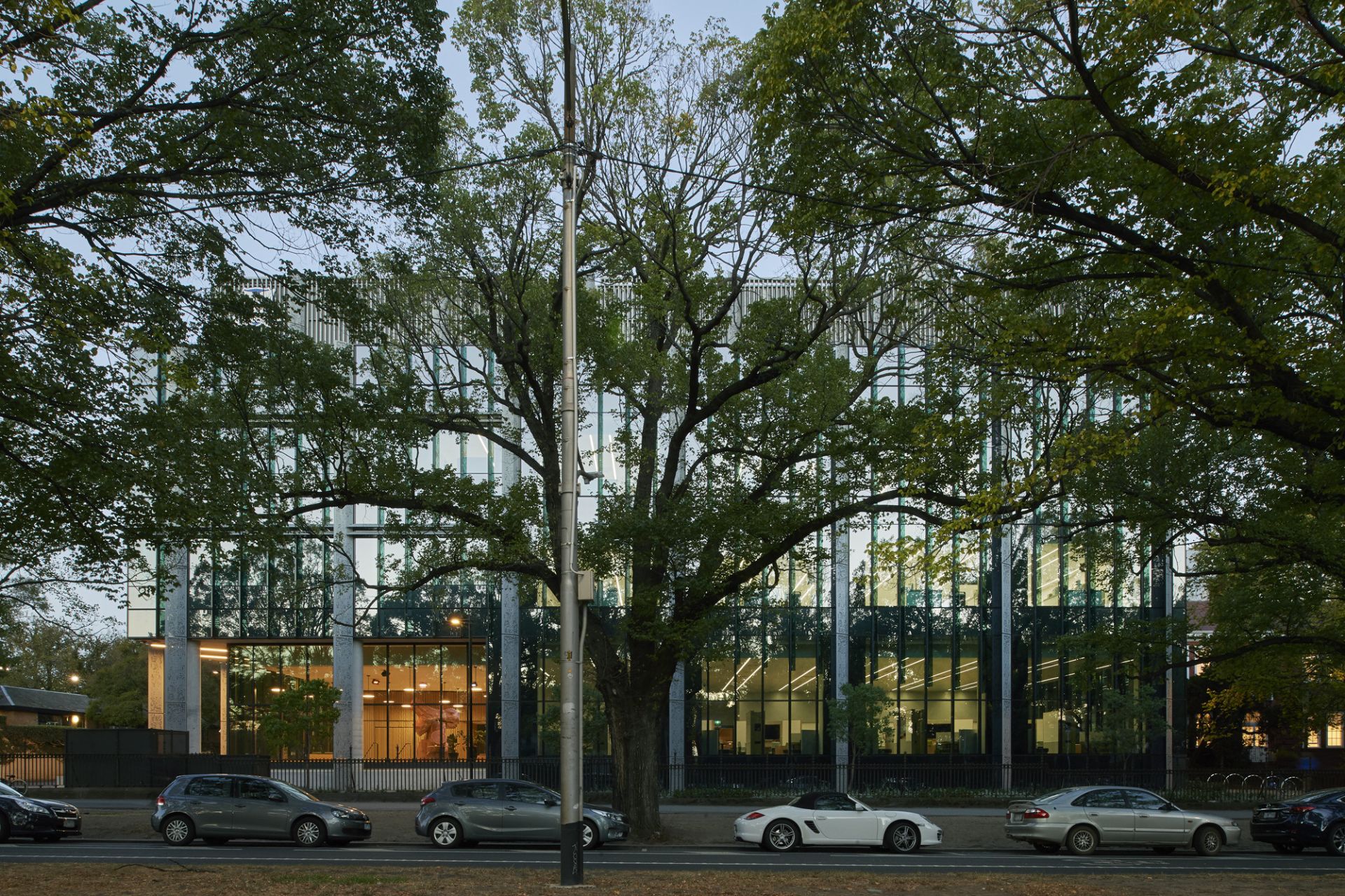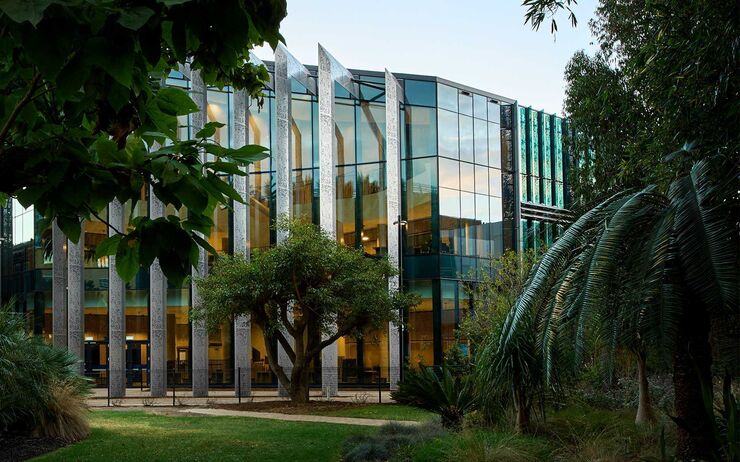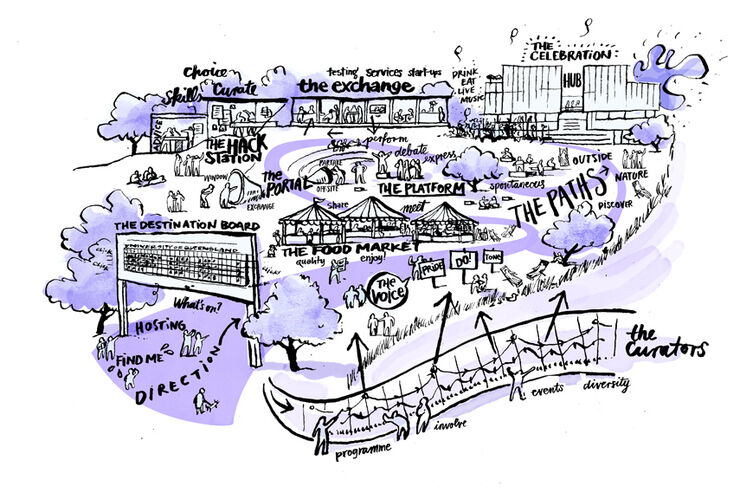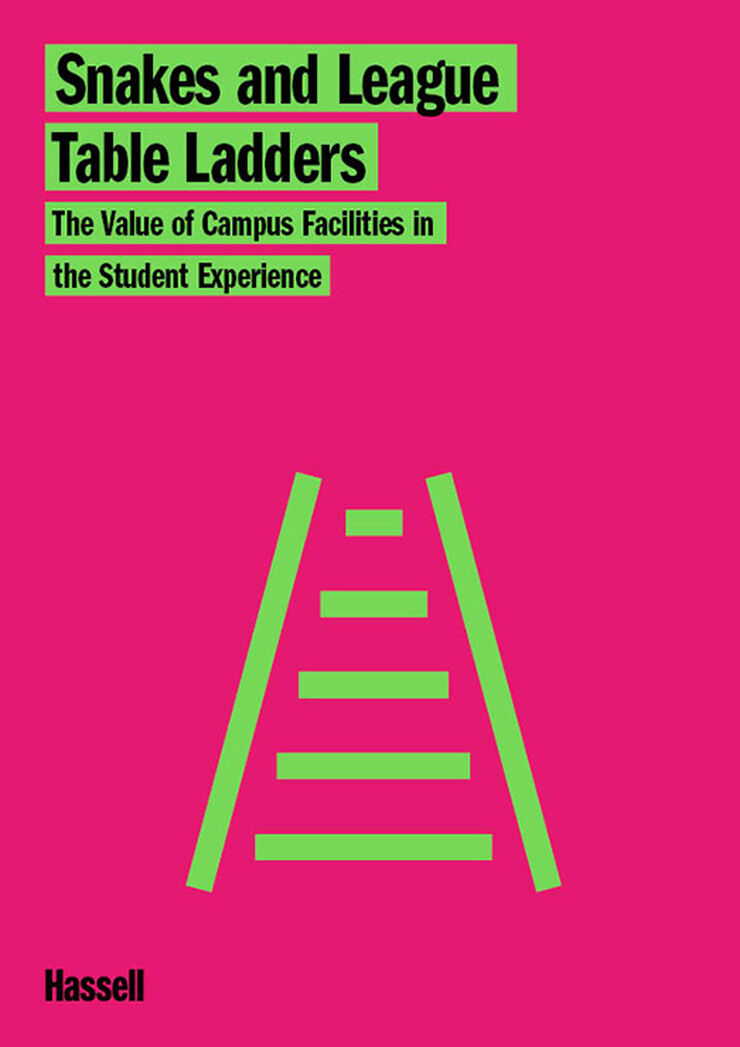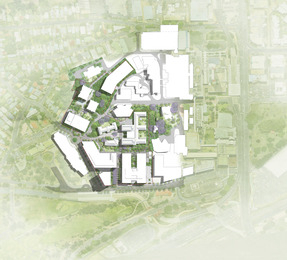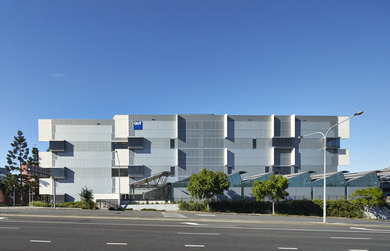The University of Melbourne’s Life Sciences building is the prestigious university’s first cross-faculty, specialised learning and teaching facility.
The building, which brings together academics and staff from veterinary sciences, agricultural sciences, bioscience and medicine and health sciences, was opened in 2019 and achieved world-leading environmental and sustainable certification.
Once a ‘back-of-house’ entrance to the university, the building complements and reflects its surroundings to provide a welcoming place for people to come together each day.
Its curved shape also creates a strong connection to the concentric System Gardens – one of the oldest botanical gardens in the Southern Hemisphere and still being used by students over 160 years after it was first planted.
The layered façade is reminiscent of the glasshouse that originally sat at the centre of the gardens, while details like patterns on inside and exterior walls resemble what’s under the microscope and remind users what this place is all about.
Inside, innovative laboratories and bespoke, collaborative classrooms feature monochrome, minimal detailing that puts the content of the lessons in focus. The informal study spaces rely on warm timber to create social community environments, culminating in the sweeping timber staircase.
Together with our client, we designed the building to expand minds and spark discoveries – preparing students for more successful careers in a fast-changing world.
